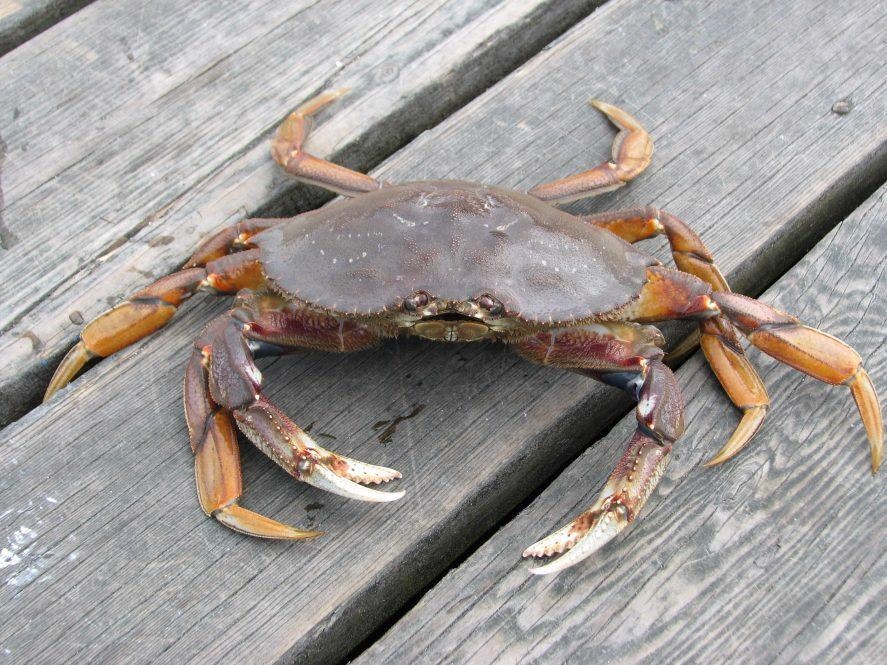Timing and seasonality are known to be components of complicated life cycles for several marine animals, such as the Dungeness crab. Disturbances to these components can severely affect their population.
 The life cycle of the Dungeness crab offers lessons on the potential effects of climate change for other species. Image Credit: Adobe Stock.
The life cycle of the Dungeness crab offers lessons on the potential effects of climate change for other species. Image Credit: Adobe Stock.
Gaining better insights into how climate change will affect each life stage is not so easy when taking into account all the variables and moving parts in a dynamic environment. Despite such difficulties, this data is considered crucial for sustainable fishery management and to forge new conservation plans.
Scientists from the University of Washington, the National Oceanic and Atmospheric Administration (NOAA), Simon Fraser University and the University of Connecticut Department of Marine Science, including PhD student Halle Berger, Assistant Professor Catherine Matassa and Assistant Professor Samantha Siedlecki, studied the Pacific Northwest portion of the Dungeness crab fishery, stretching from Alaska down to Southern California.
The researchers identified which life stages are highly susceptible and to which stressors. The study was recently reported in the journal AGU Advances.
According to Siedlecki, this study is part of a regional vulnerability assessment and collaboration that is financially supported by the NOAA Ocean Acidification Program. Moreover, it analyzes the issues related to environmental justice.
Tribal communities in the Pacific Northwest identify Dungeness as both culturally and economically important species for their way of life. Species are moving but of course tribal communities don’t have the option of moving their land in response. The tribal communities are very interested and motivated to think about ways they can sustain the fishery.
Samantha Siedlecki, Assistant Professor, Department of Marine Sciences, University of Connecticut
This evaluation analyzed three stressors all due to future carbon emissions: low oxygen levels (hypoxia), ocean acidification (OA) and warming temperatures. Berger described that they combined several layers of data to make a realistic model to investigate the impacts of stressors at various times across the life stages, from eggs to larvae, to juveniles, to adults.
While modeling for future conditions, the Intergovernmental Panel on Climate Change (IPCC) holds representative carbon pathways (RCP) that are emission scenarios considering various degrees of carbon emissions mitigation.
We used RCP 8.5, which is the highest, and considered the ‘worst case scenario’ if there is no climate change mitigation at all. Then we overlaid the ocean conditions and habitat maps for each life stage. We also added something new to the framework, where we layered in a larval transport model to simulate the movement of larvae in the water column to get a more realistic picture of the conditions they would experience.
Halle Berger, PhD Student and Study Corresponding Author, Department of Marine Sciences, University of Connecticut
Then, the scientists analyzed data from early studies on Dungeness crabs, which enabled them to assign scores for susceptibility at every life stage to comprehend responses to the stressors on a more individual level.
Also, they performed a weighted mean to evaluate vulnerability at the population level which, according to Berger, considers which life stage adds up to the most to growth or susceptibility of the population.
It turned out that the adult life stage is the most critical in driving the overall population vulnerability. We found that for all three stressors there will be increased population level vulnerability in the future, and the most severe is to hypoxia. Low oxygen events are confined to the upwelling season, in spring and summer which impacts the adults, whereas ocean acidification manifests more year-round in the future, impacting all life stages.
Halle Berger, PhD Student and Study Corresponding Author, Department of Marine Sciences, University of Connecticut
The scientists say it is very simple to integrate such data into decision-making processes to safeguard the crucial life stages in specifically stressful conditions to help retain sustainable fisheries.
Berger stated,“ An example would be monitoring low oxygen events in the summer, and maybe pulling the crab traps earlier. This would help mitigate from the crabs dying in the trap.”
Implementation of these measures would enable fisheries to safeguard the adults, the most susceptible and vital life stage for retaining the population. Berger notes that this study stresses the significance of considering species vulnerability with a similar approach.
Berger added, “This study showcases a lot about the importance of seasonality and life history complexity in this framework. Other vulnerability assessments that are looking at marine species that have complex life histories could also use this type of framework to capture some of those losses.”
“The laboratory experiments that have been done were only able to look at each of these stressors independently but obviously they will all happen together. It is important that there are experiments that look at multi-stressor impacts to more accurately assess the overall, cumulative vulnerability,” concluded Berger.
Journal Reference:
Berger, H. M., et al. (2021) Seasonality and Life History Complexity Determine Vulnerability of Dungeness Crab to Multiple Climate Stressors. AGU Advances. doi.org/10.1029/2021AV000456.